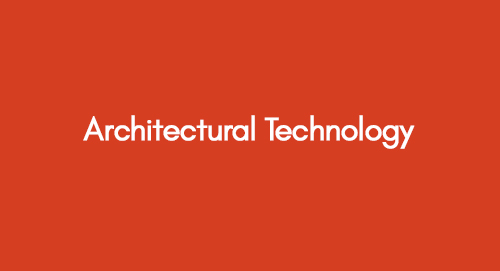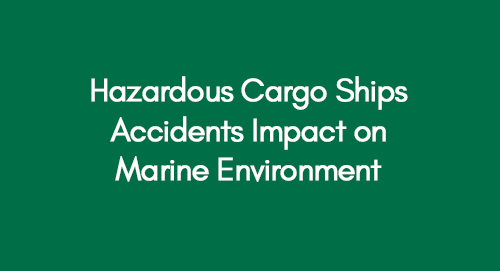
Hazardous Cargo Ships Accidents Impact on Marine Environment
December 24, 2020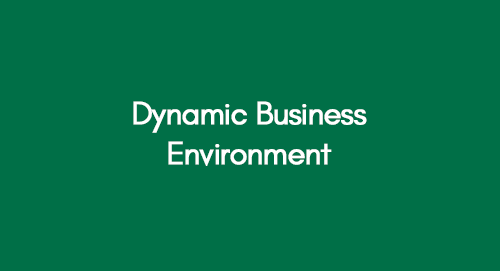
Dynamic Business Environment
December 24, 2020Architectural technology is like the secret science behind building cool and safe structures. It's all about using smart tools and techniques to create strong, energy-efficient, and beautiful buildings.
Risk management minimizes potential threats by identifying, assessing, and mitigating uncertainties, fortifying decision-making and bolstering resilience against adverse outcomes.
Risk Management-An Overview
The importance of the effectiveness of the risk management process in managing projects is known to those who have experienced success in delivering value-centric deliverables. In the construction industry, risk management processes tend to ensure the timely and cost-effective completion of medium to large-scale development endeavours.
Learn About the Importance of Risk Management in Development Industry
Risk Management holds pivotal importance in the construction/development industry as it is considered one of the most fundamental aspects of any project. Successful risk management ensures sufficient mitigation measures are taken against the risk analysed, which is extremely important to avoid losses. All processes/activities related to projects are optimised to produce the expected results per the finance allocations and project delivery/productivity. According to the research conducted by Pheng and Chuan in 2006, the risk management principles must be carefully adopted for all development projects, as it ensures durability, success, and optimum productivity of construction projects (Pheng and Chuan, 2006.
Exploring the Utilization of Tools and Techniques to Guarantee Project Performance
Risk management entails using various tools and techniques that facilitate the execution of different processes involved in mitigating and addressing risk occurrences. There are various tools employed by project managers, each with its particular benefits and features ensuring high project performance. A study was conducted to determine the most effective tools for planning and handling risk types on a project. As per the survey conducted, including the response evaluation, it was discovered that high-performing tools such as Contingency plans, simulation and risk probability assessment are among the high-ranking tools that practitioners prefer using with effective risk management practices. It is recommended that these tools are employed in existing risk management process flows for medium to large-scale development projects flows in order to improve project performance and to refine further risk handling procedures (Raz and Micheal, 2001)
The practitioners and construction project managers affiliated with risk management techniques know the existing practices and tools available to mitigate low and high-risk project occurrences. Current research reflects that researchers are keenly interested in this particular area, which is also one of the core areas defined by the Project Management Institute in their standard, Project Management Body of Knowledge (PMBOK). As per its definition and global acceptance, PRM or project risk management is a process that is associated with a project life cycle from the initiation phase till its successful closure playing a distinctive role in the execution phase and the monitoring and control phase. Hence, it is a significant process in the overall project life cycle that ensures all inherent risks are identified, and response planning is well defined in order to successfully meet project objectives (Flanagan et al., 2006).
A Comparative Analysis of the Risk Management Framework
The benefits of applying modern risk management techniques include high project performance, meeting project schedules and timelines, minimising cost overruns, customer satisfaction, meeting project objectives and successful project delivery that meets quality standards. The typical risk management process defined by the PMI consists of standardised phases such as risk identification, quantification, response development and control. However, variations have been defined by practitioners and researchers. Boehm (1991), for example, has suggested a risk management model comprising of two primary phases risk assessment, which is associated with the identification, study or analysis and categorisation of project risks with regards to priority and the risk control phase that is related to the risk response planning, contingency and monitoring or tracking of risks including the implementation of corrective actions or remedial strategies to address risk occurrence.
Fairley (1994), another researcher, introduces seven phases to the risk management process in his study. These particular steps include:
- Identification of risk factors
- Assessment of risk probabilities and severity
- Developing strategies to mitigate identified risks
- Monitoring risk factors and contributors
- Implementing contingency plans
- Managing the situation
- Recovering from the risk occurrence
Software Engineering Institute defines and implements standards and methodologies for software development project execution and has proposed a five-step risk management process. This entails phases such as risk identification, analysis or evaluation, risk response planning and lastly, monitoring and control. Further analysis of the conceptual framework suggests that the underlying concepts of the risk management process are similar, with slight variations in models proposed by different practitioners and researchers. The researchers Kliem and Ludin (1997) have suggested in their work a similar risk management framework that constitutes four distinct phases, identification, risk analysis, control and reporting phases, while another study by Deming proposes a similar model with the basic procedural steps for managing risks and ensuring quality. These steps are referred to as a plan, do, check and act procedural flow. (Raz and Micheal, 2001)
The PRM framework suggested by Ward and Chapman is, however, a more comprehensive process that includes nine steps outlined below:
- Defining the key aspects and features of the project
- Focusing on a strategic approach to risk management practice
- Identification of where risks might arise, including implicit and unexpected occurrences
- Structuring and organising the details regarding risk assumptions and relationships to business variables
- Assigning responsibility and ownership of risks, mitigation and responses
- Estimating the level of uncertainty and evaluating explicit occurrences
- Evaluating and assessing the relative severity and probability of the various risks
- Planning responses, corrective actions and managing risks by monitoring and controlling project execution (Ward and Chapman, 1997)
The comparative analysis of the conceptual framework for risk management or PRM procedures suggests that practitioners and researchers agree on the core concepts relative to risk management practice with variations and slight differences in the extent of input to each process and the organisation of tasks in various phases and steps.
Therefore, project managers and risk management practitioners turn towards advanced and sophisticated risk management tools for optimising modern practices in project management and providing a support system for the efficient functioning of the RMP framework. In today's dynamic and fast-paced business environment, such specialised tools are much needed, especially in the construction industry, to mitigate the inherent risks related to cost, schedule, business, technology, competition and external business environment during the planning and development of built environment projects. Such tools facilitate the construction managers and project team members in delivering the project as planned while ensuring quality, customer satisfaction and increased project performance (Raz and Micheal, 2001)
Tools and Strategies for Risk Management
The risk management process is of paramount importance for construction projects. Any PRM framework would require the support of advanced tools sophisticated state the identification of risks, response planning, implementation of risk management plans and the monitoring and controlling phases. This also entails the awareness and importance of using tools and strategies to effectively manage projects both at the individual and organisational levels. The effort involved and the general realisation include understanding the significance of adopting such tools, learning their particular use and understanding how the integration of these tools in the existing organisational infrastructure is to be carried out. This may involve aspects such as computer technology, technical skills and executing procedures (Banaitiene, 2012).
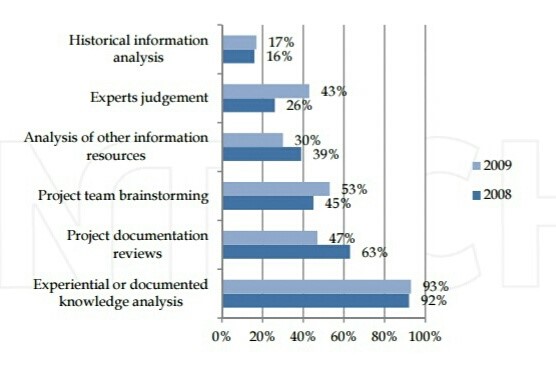
Figure 1: Risk Management Practices in Construction Projects (IN TECH, 2012)
Today's interest lies in implementing the most effective RMP tool and strategy to perform risk management and improve or refine existing risk management procedures. Construction Projects in modern times use specialised tools to mitigate and address the various risks associated with supply chain, technology and business delivery. In his study, Ahmed et al. (2007) provided a review of the techniques that can be used for managing engineering projects. These include establishing risk management objectives, identifying risks, and assessing probability and mitigation. Jannadi and Almishari (2003) presented a risk assessor model (RAM) for managing risks that involved setting scores for the different risks related to construction activities.
Other tools such as Responsibility assignment, Risk related cost-benefit analysis and simulation tools are also employed by managers. As per a survey conducted in 2010 to analyse the use of tools and techniques in construction projects, it was found that the most widely used tool was performance bonds and warranties, while the most employed techniques included resource reservation and transferring of risks to another entity or project and insurance. The figures below illustrate the frequently used RMP tools and techniques in Construction Projects relative to the survey conducted. (Banaitiene, 2012)

Figure 2: Risk Management Techniques in Construction Projects (IN TECH, 2012)
However, as highlighted by Banaitiene and Banaitis (2012), the application of these RMP tools depends on factors such as the organisation’s policy and RMP Framework, project management strategy, risk management perceptions or attitude of the project team members, project nature and resources availability. This paper thus attempts to study the effectiveness of the risk management tools and techniques for construction projects focusing on how they should be implemented through a case study analysis. The chosen case study CrossRail Project is studied and analysed to provide an explanation for the research question.
Research Methodology
The study aims at analysing the types of risks associated with construction projects in modern practices related to the built environment. This research has been conducted to find comprehensive evidence that provides substantial justification for the question under consideration: what risk management tools and strategies are used in construction projects, and how can they be effectively implemented? The research further attempts to provide answers to the query by analysing a case study closely related to the highlighted topic.
The research methodology comprises analytical data and statistical information related to the kinds of tools and techniques in practice by the construction industry for effective risk management. For the collection and analysis of the information, various online sources, including journal articles, published material by professional organisations, libraries and databases, e-books and website articles related to risk management framework were used to obtain relevant data, including statistical evidence collected through surveys conducted by researchers and practitioners. This data was then analysed using comprehension and analytical skills to derive deductions and conclusions for the topic under discussion.
The secondary research methods included a literature review and data analysis to analyse and collect information for the case study related to risk management. The information related to the Crossrail project and the statistical data available from the Crossrail organisation was collected from online sources and published articles relative to the chosen Case study. An in-depth analysis was performed to draw inference and provide a review of the effectiveness of the RMP strategies and tools application in retrospect of the research conducted, information gathered, and analysis performed.
Crossrail Project
The CrossRail project is a big plan to build a new train line in London, like a subway but bigger. It will make it easier for people to travel across the city and reduce congestion on existing train lines.
Introduction
The Crossrail Project is an enthralling initiative by the UK government to expand the existing Railway network. The project entails the roll out of a new railway underneath the Capital, London, which is expected to increase the capacity and delivery performance of the transport network by an estimated 10%. The railway expansion project is an exciting construction endeavour aimed at infrastructure development and economic growth. The Crossrail project is expected to facilitate commuting for around 15 million people by providing a 45-minute drive to central business districts and commercial centres in the capital. (Morgan, 2011)
The scope of the railway project comprises the construction and development of idetwinre tunnels that span a distance of 21km underneath the Capital city, including the construction of five expansive underground railway stations between Liverpool Street and Paddington. An additional underground station is also planned to be constructed in the eastern part of the White chapel. The central part of the constructed railway network would interlink with the current railway network in the eastern and western parts providing service to almost 37 railway stations. The planned route map constitutes the Western starting point Maiof denhead and Heathrow utilising the constructed tunnels from which the transport network would dissect into two branches. (Morgan, 2011)
The first route would link Canary Wharf and Custom House with Abbey Wood
and the second route would provide transport services from Stratford to Shenfield in the eastern part. The partnership agreements with the private firms would constitute the development of the Old Oak Common depot and an entirely new rolling stock. Generally, the Crossrail Act 2008 includes a comprehensive list of almost 3500 development objectives involving various stakeholders and project entities. It is critical that these objectives be met instead of the commitments defined in the Crossrail Act 2008.
Risk Analysis and Assessment-CrossRail Project
Due to the complex nature and comprehensive scope of work, the diverse infrastructure project entails various challenges that reflect inherent risks. An analysis of these risks provides an insight into the risks and their prospective impact on the project execution and performance. Morgan (2011), in his article, 'Briefing: Risk Management critical to Crosssail’s success’, explains and highlights the risks involved in the railway project and their particular impact. The most significant of these are the technical risks associated with the underlying transport network technology that entails the development of the Crossrail network and its integration with the existing railway network. The main concern is to ensure that the development of the new tunnels and stations does not interfere with the smooth operations of the current London railway network.
Another important risk is the funds and development costs available for the complete rollout of the railway network. The construction of the new Crossrail project must be completed as per agreed specifications utilising the available funds and project budget. The project schedule is also a prime concern as the planned duration of the project was lately rescheduled through the use of project management and simulation solutions to minimise operational costs. The project also entails interface and stakeholder-related risks. CrossRail Limited, a recently established organisation, has undertaken this project's delivery to manage this infrastructure project's execution and integration aspects. The organisation works with strategic partners such as London Underground, Rail for London, Network Rail, Docklands Light Railway (DLR) and utility firms on the Crossrail initiative. Additional project entities and Stakeholders include Berkeley Homes, BAA, the City of London and the Canary Wharf Group. Hence it is important to address the inherent interface risks associated with the highlighted contributors and participating partner firms. (Morgan, 2011)
The Crossrail project is expected to provide employment to almost 14000 workers. With the funding settlement reconfirmed for Crossrail Ltd by the UK government treasury in 2010 after the spending assessment, the firm needs to deliver as per expectations. The inherent organisational and interface risks and challenges related have to be managed. The concern is to work in collaboration with other entities and partners, forming a cohesive team to deliver on the construction challenges ahead, which require informed decision-making and effective management. The partner firms also realise the importance of the risk management strategy and its application in the most effective way to meet project objectives.
Risk Management Process and Strategy- The Practice
The analysis of the culture and risk management attitudes of the workforce at Crossrail Limited, as described by Morgan (2011) in his study, suggests that the firm strongly believes in implementing best practices with regards to risk management to achieve success on projects. The firm has already implemented practices to ensure that RMP is integral to the project environment. The general perception of the management at Crossrail is that through proper identification and monitoring of risks and uncertain factors in the project, inherent threats can be addressed, performance can be enhanced, informed decisions can be made, and costs can be minimised, thus adding value to the project delivery.
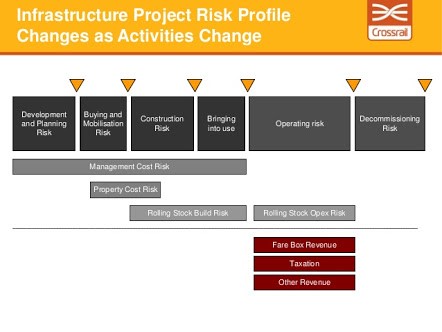
Figure 3: Risk Management Practice at Crossrail (Moving London Forward-Crossrail, 2014)
For the Crossrail project to be delivered as planned, it is critical to implement productive risk management procedures and techniques that are beneficial to the development endeavour and achieve defined objectives and stakeholder commitments. The RMP framework should not just be perceived as a means to conform to established policies and legislation. Still, it should be considered a support system for ensuring quality execution and meeting project goals. One of the actions that the CrossRail organisation has taken to effectively implement the risks management strategy is the periodic and regular review of the inherent risks of the railway project. The risk assessment and review are regularly carried out by the senior management of the company in collaboration with the partner firms to ensure strategic plans of the project are safely being carried out as defined.
Morgan (2011), in his review of the RMP strategy at CrossRail, states that recent survey responses to analyse risk management trends by the Marsh/NCE in 2010 reveal that almost 65% of the firms in the construction industry tend to implement written or recorded risk management procedural flows clearly describing the mitigation processes and the monitoring and controlling phases while 31% from the remaining firms have an official risk review committee or board. At CrossRail, measures have been taken to develop and promote a workplace culture that is cognizant of the need to use best practices for RMP. Practices for accountability and responsible work performance have been implemented while providing a culture allowing project team members to collaborate openly, working mutually towards project goals. Employees are encouraged to review and evaluate inherent risks at each echelon of the organisational structure providing necessary feedback for any critical deviations from the risk management plan observed at any time.
CrossRail management realises the technical and organisational risks and challenges associated with the railway project; hence they have adopted an RMP framework and strategy that is strong, capable and substantial enough to meet the diverse and challenging milestones for the project. The risk management strategy is supportive and flexible for the employees to easily adapt to the procedural requirements while learning from the implemented techniques and practising accountability in parallel. The most effective element of the risk management strategy at the organisation is that it is integrated into the existing business process model reflecting risk management practice as part of normal business procedures.
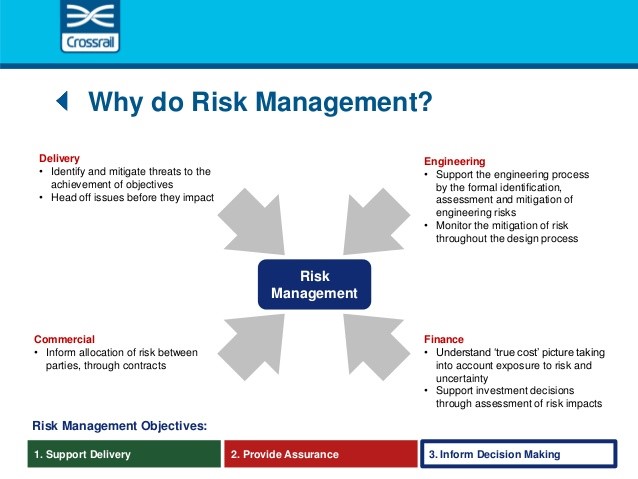
Figure 4: Risk Management Requirements at Crossrail (Moving London Forward-Crossrail, 2014)
The RMP framework at Crossrail takes the core elements of the procedural flows highlighted earlier in the comparative analysis. The framework consists of the following distinct RMP phases:
- Risk Identification
- Risk Assessment and Evaluation
- Risk Mitigation and Corrective Action
The approach pays key attention to the fundamental concepts of analysing the probability and severity of risks, evaluating their impact and providing mitigation plans that include corrective actions for risk-based occurrences. The organisation continuously encourages and trains the Crossrail employees to realise the importance of managing risks and their influence on project success. Project team members are enlightened through briefings and workshops to encourage them to implement RMP effectively through regular risk identification, evaluation and monitoring. The organisation also believes in facilitating a culture that develops positive attitudes, perceptions and behaviour of the employees with regards to best practices for RMP. This motivates the employees to be proactive in risk identification by looking for any new risks in the project and then devising plans to eliminate such threats or minimise their impact.
The risk management strategy at Crossrail is diverse and flexible enough for the proper identification of both positive and negative threats associated with the project; hence the project staff periodically looks for any threats or opportunities related to the railway project, adding value to the business delivery by minimising the influence of threats and enhancing the impact of the available opportunities. Another significant aspect of the RMP strategy is the effective utilisation of responsibility assignment matrix RAM that allows clear lines of responsibility to be defined. The risks associated with the business domain of a particular party are assigned to that party for proper mitigation as they are the best source of handling threats related to their specialised area. Further, measures are taken to ensure that the particular party transfers the risks associated with their domain and the mitigation responsibility to the correct team members, suppliers, and stakeholders. This responsibility assignment for risk management is effective as it ensures productive risk mitigation and accountability, thus enhancing project performance while minimising interference and unnecessary financial overhead.
The official risk management framework has defined procedural flows for risk mitigation and risk monitoring and control at Crossrail. Using these standard set of procedures, the employees are able to effectively find, record and monitor inherent risks, threats and opportunities. In construction projects, evaluating and reviewing potential threats, especially in the design and engineering phases of the project life-cycle, are extremely important to ensure that design errors and development delays are properly addressed. Risk response planning is a significant contributor to effective RMP as it allows the early identification of risks associated with the design and development phases providing a platform to ensure that any changes would be effectively addressed and uncertainties would be handled without any significant negative effect on the project execution (Morgan, 2011)
The Crossrail management realising the benefits provided by the implementation of an effective RMP strategy, has already taken productive measures to ensure that all elements of the RMP strategy are in place. These actions have been proven to provide desired results related to achieving the project objectives. The techniques and measures taken by the Crossrail management for risk management include the following:
- Key decisions regarding the technical requirements of the development project have been taken into consideration in the risk assessment carried out for the inherent technology-related risks. These decisions entail using proven and reliable engineering solutions for constructing the railway to minimise any technical risks.
- The contracts related to suppliers, contractors and strategic partners have been structured accordingly per review feedback from risk assessment for interface and organisational risks. This ensures that stakeholder-related risks are minimised.
- Risk responsibility matrix has been kept in consideration when drafting tenders to ensure that all development-related risks are addressed and that the party best capable of handling risks is accountable for risk mitigation, risk transfer and contingency pertaining to their specialised domain.
- Float optimisation and schedule refinement have been ensured by reprogramming the Crossrail project's centralised part.
- Risks associated with launching the Crossrail project are to be reduced and mitigated after reviewing and assessing the commissioning strategy, a task currently in progress.
RMP Tools and Techniques- Crossrail Project
With an estimated budget of 14.8 billion pounds, the Crossrail project is one of the biggest Construction projects in Europe, with a planned completion date set for late 2018. Work on this project started in May 2009, and the development project currently employs almost 8000 workers to construct and develop the railway underneath London with the new tunnels and stations. The construction project will significantly transform London's rail transport network, with an estimated 200 million people utilising the newly developed railway services each year, reaping the benefits of the reduced travel time. (Cotterrel, 2013)
The project's nature in 2009 took a critical turn from development to business delivery, as reflected in the article titled 'Risk Management at Crossrail' by Steve Cotterrel (2013), in which he provides a detailed account of the risks, cost control procedures and risk management processes for the construction project. The organisation realised the need to implement effective RMP procedures due to the changes in the risk domain of the project and planned to recruit a Head of Risk Management to supervise the RMP operations for the development project. Rob Haistead was hired in 2009 to manage delivery and optimise RMP procedures, including contractor management. Rob Haistead, a professional with proven expertise in railway projects, took over the responsibility and implemented a risk management strategy keeping into consideration the risks associated with railway projects from his experience. His prime concern was to mitigate the threats related to cost overruns and schedule delays.
Rob at Crossrail observed that before his taking over as Head of Risk Management at the firm, potential threats and risks had already been analysed, and the management was paying considerable attention to addressing the challenges ahead. The most important of these risks were those directly related to the construction work, such as grounds settlement, as it involved various risks associated with the buildings, underground railway entities and utilities. Further, many interface risks were involved as multiple projects were being executed in parallel, such as the construction of the stations, the tunnel development and excavation projects. These projects needed appropriate interfacing and integration that required careful management and effective RMP.
Rob also realised that a large-scale construction project such as this involved complex challenges and various risks that needed immediate addressing for effective mitigation. With the change in the project nature, the project team also expanded from 200 to 1000 workers to meet the project objectives. A risk management framework was hence carved that provided strategies to mitigate all risks associated with the delivery scenario, cost, schedule, stakeholders and interfaces between projects. All the project team members, including the contractors, were briefed regarding the RMP strategy and encouraged to mutually work towards the identification, monitoring and mitigation of inherent threats on the project.
Initially, CrossRail made use of spreadsheets for managing cost and schedule details for the project, as explained by Cotterrel (2013) in his study. After the risk management strategy was established, CrossRail went ahead with enterprise-wide implementation of the specialised RMP tool, Active Risk Manager, to provide adequate quantitative and qualitative risk-related information to the project team. The Active Risk Manager enabled the organisation to integrate risk information across enterprise systems, including delivery partners, contractors and other stakeholders like suppliers and implement a common risk management process across all channels. The RMP tool provided timely and effective risk-based information to the firm for review, reports, monitoring and analysis.
In April 2011, with the progress of the construction project and the organisational growth, the management realised that they needed to implement a more diverse RMP tool for information management and to aid decision making. Hence, they decided to implement the PRISMG2 tool after market research. As it was already being used by one of the delivery partners, therefore, CrossRail decided to use this single specialised tool for managing risks. This tool has been developed by the ARES LLC firm. It is a technical project management solution that enables firms to manage costs on large-scale projects, manage risks for construction projects and perform project management tasks to enhance business delivery and project performance. The tool is built keeping into consideration the core concepts of the Earned value Technique (EVM) and provides features to effectively record, analyse, monitor and mitigate risks associated with the project's cost and schedule. The tool also provides easy integration with Enterprise applications such as Oracle, SAP, Microsoft Project and Primavera (Cotterrel, 2013)
Crossrail now uses the PRISMG2 software solution to perform cost Management for the project and effectively communicate and manage risk-based details for the construction project. The tool provides the organisation with costing forecasts and best-case scenarios for the project enabling the management to make informed decisions hence minimising the impact of risks related to cost and schedule.
Results and Conclusive Remarks
The literature review and case study analysis for this particular study provide substantial evidence for the fact that risk management tools and strategies are most effective in the success of projects and meeting project objectives. Further, it has been observed that each RMP tool and technique has benefits of its own, and the adoption of any particular device would depend on various factors that are associated with the project's nature and scope, organisational policies and the employee’s commitment and behaviour towards the use of tools to mitigate risks effectively. For construction projects, RMP strategy is critical to the success of the project and in managing the various risks involved with the cost, schedule, stakeholders and development work of the project.
The case study analysis of Europe's largest construction project, CrossRail, reflects the effectiveness and benefits of utilising the RMP tools and provides insight into how they can be used to mitigate risks better. The implementation of the specialised tool such as PRISMG2 by Crossrail for the construction project has helped the firm in effectively managing diverse project information across multiple channels, including those of the suppliers, contractors and delivery partners. The RMP strategy and tool have provided the firm with a flexible platform to identify threats associated with the railway project's cost and schedule, allowing for quick mitigation and contingency planning. The specialised tool provides real-time forecasts regarding schedule, budgets and labour utilisation, enhancing project performance and providing value for money.
The statistical data and qualitative information from various departments in the organisation are added to the system wing for customised reporting and detailed analysis. These forecasts and real-time performance reports allow the management to make important beneficial decisions that are vital to the success of the project. Crossrail has been using the RMP tool for almost four years now. It has provided significant benefits through providing accurate and reliable information and visibility of cash flows for each project area, thus ensuring transparency and seamless monitoring of budgets and costs.
The most important aspect of the risk management strategy at Crossrail has been the extension of the RMP techniques and tools to the supply chain department, which has resulted in a high level of stakeholder engagement, thus providing effective mitigation and monitoring of risks. The delivery partners and contractors use the active Risk Manager to integrate risk information sent to the PRISMG2 system at Crossrail for review and analysis. Costs associated with changes and issues on the railway project are also being monitored and managed through this RMP tool, ensuring success and objectives achievement for the construction project.
References
Ahmed, A., Kayis, B., Amornsawadwatana, S., (2007). A review of techniques for risk
management in projects. Benchmark Int J 2007;14(1):22–36.
Boehm, B.W., Software risk management: principles and practices, 1991. IEEE
Cotterel, Steve, (2013). Risk Management at Crossrail, PM Today, 2016. Available at:<https://www.google.com.pk/url?sa=t&source=web&rct=j&url=http://www.aresprism.com/wp-content/uploads/2014/04/Crossrail-PRISM-Article.pdf/>. Accessed [24 January 2016]
Chapman, C., Ward, S., (1997). Project Risk Management: Processes, Techniques and Insights. John Wiley.
Down, A., Coleman, M., Absolon, P, (1997). Risk Management for Software Projects. McGraw-Hill, 1997.
Dorofee, A.J., Walker, J.A., Alberts, C.J., Higuera, R.P., Murphy, R.L., Williams, R.C., (1996). Continuous Risk Management Guidebook. Pitts-burgh: Carnegie Mellon University, 1996.
Fairley, R. (1994) Risk Management for Software Projects. IEEE Software 1994;57±67.
Flanagan, R., Norman, G., Chapman, R., (2006) Risk management and construction. 2nd ed. Oxford: Blackwell Pub; 2006.
Institution of Civil Engineers and the Actuarial Professio, (2005). Risk analysis and
management for projects (RAMP). 2nd ed. Institution of Civil Engineers and the
Actuarial Profession. London: Thomas Telford Ltd; 2005.
Jannadi, O.A., Almishari, S, (2003) Risk assessment in construction. Construction Engineering Management 2003;129(5): 492–500.
Kliem RL, Ludin IS. Reducing Project Risk. Gower, 1997.
Loosemore, M., Raftery, J., Reilly, C., Higgon, D. (2006) Risk management in projects, 2e, Taylor & Francis, Oxon.
Morgan, T, (2011) Briefing: Risk Management critical to Crossrail’s Success, ICE Proceedings: Management, Procurement and Law, 164 (2), pp 57-58.
Mills, A. A systematic approach to risk management for construction, 2001. System Survey 2001;19(5):245–252.
Nerija, Banaitiene. and Audrius, Banaitis. (2012) Risk Management in Construction Projects. Department of Construction Economics and Property Management, Faculty of Civil Engineering, Vilnius Gediminas Technical University, Vilnius, Lithuania.
Oyegoke, A.S., (2006) Construction industry overview in the UK, US, Japan and Finland: a comparative analysis. J Construction Residence 2006;7(1/2):13–31.
Pheng, L.S., Chuan, Q.T, (2006) Environmental factors and work performance of project managers in the construction industry. International Journal of Project Management 2006;24(1):4–37.
Project Management Institute, (2007). Construction extension to the PMBOK Guide. 3rd ed. Newtown Square: Project Management Institute
Project Management Institute, (2008). Guide to the project management body of knowledge (PMBOK Guide). 4th ed. Newtown Square: Project Management Institute; 2008.
PMI, (1996). A Guide to the Project Management Body Of Knowledge. Project Management Institute, 130 South State Road, Upper Darby, 1996.
Raz, T. and Michael, E. (2001) Use and benefits of tools for project risk management, International Journal of Project Management, 19, pp 9-17.
Get 3+ Free Dissertation Topics within 24 hours?

















